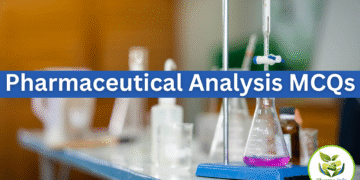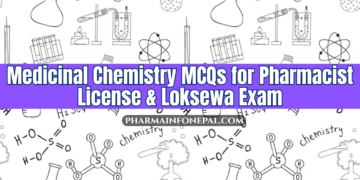Nepal Nursing Council License Exam Questions
Nepal Nursing Council License Exam Questions for Nursing Students.
1. Which of the following is the largest cranial nerve?
a) Vagus nerve
b) Optics nerve
c) Trigeminal nerve
d) oculomotor nerve
2. The gas that binds strongly with hemoglobin is:
a) Nose
b) Pharynx
c) Larynx
d) Lungs
3. Small blood vessels that supply the walls of larger arteries and veins are called?
a) Pluenic artery
b) Coronary artery
c) Renal artery
d) Vasa vasorun
4. Which is antidote of opoid poisoning?
a) Salbutamol
b) Atropine
c) Naloxone
d) Flumazenil
5. A state due to loss of excessive ion of carbon dioxide from the body is known as:
a) Respiratory acidosis
b) Metabolic acidosis
c) Respiratory alkalosis
d) Metabolic alkalosis
6. Total volume of body fluid is about……..of the body.
a) 20%
b) 60%
c) 40%
d) 80%
7. The arteriole which takes blood away from the glomerular capsule is:
a) Afferent arteriole
b) Efferent arteriole
c) Loop of henle
d) Distal convoluted tubule
8. Albumin one of the plasma protein synthesis in:
a) liver
b) adrenal gland
c) spleen
d) pancreas
9. Which part of mammalian alimentary canal does not secrete any enzyme?
a) Mouth
b) Oesophagus
c) Stomach
d) Duodenum
10. Life span of mature RBC is about:
a) 100 days
b) 120 days
c) 180 days
d) 365 days
11. Approximate height of the bottle from the bed of the client should be:
a) 30 cm
b) 45 cm
c) 35 cm
d) 55 cm
12. Your patient has an order for an analgesic medication to be given as needed. The correct abbreviation for ‘as needed’ is:
a) TUPR
b) PMH
c) PRN
d) HS
13. Nursing care for a patient with an indwelling catheter includes which of the following:
a) irrigation of the catheter with 30 ml of normal saline solutions every 4 hours
b) encourage a generous fluid intake if permitted
c) informing the patient that burning and irritation of the meatus are normal, subsiding within a few days
d) changing catheters every fortnight
14. For correct breast palpation (during breast self examination) the nurse uses her:
a) Heel of band
b) index finger & thumb
c) index finger only
d) pads of her finger tips
15. The nurse assessing the clients casted extremity for signs infection which of the following finding of is indicate of infection:
a) Edema
b) Coolness of the skin
c) Weak distal pulse
d) Presence of hot spot on the cast
16. The first action the nurse should take if phlebitis is suspected at IV site is to:
a) elevated limbs
b) apply pressure over the injection site
c) administer the IV fluid faster & finish
d) remove the cannula
17. Nepal Nursing Council was established in
a) 1853 BS
b) 2053 BS
c) 1954 BS
d) 2054 BS
18. In water seal drainage bottle should be:
a) above the chest level of patient
b) below the chest level of patient
c) at the level of the chest
d) at any convenient level
19. The difference between the apical & radial pulse rates is called:
a) Pulse deficit
b) pulse amplitude
c) ventricular rhythm
d) heart arrhythmia
20. Enema is:
a) 45 cm (18 inch)
b) 55 cm
c) 65 cm
d) 75 cm
21. The movement of the solvent water from an area of lesser solute concentration to an area of greater solute concentration until equilibrium is established is known as:
a) Diffusion
b) Filtration
c) Active transport
d) Osmosis
22. A client with pyrexia will most likely demonstrate:
a) Dyspnea
b) Precordial pain
c) Elevated BP
d) Increased pulse rate
23. Development of goals & plans for care is a step of nursing process which falls under:
a) Nursing assessment
b) Planning
c) Implementation
d) Nursing diagnosis
24. When the elevated body temperature remains near the same level throughout a period of days or weeks, it is called:
a) Relapsing fever
b) Intermittent fever
c) Constant fever
d) Remittent fever
25. The person is said to have hypertension when:
a) diastolic reading is > 80 mm of Hg & systolic reading is > 120 mm of Hg
b) diastolic reading is > 90 mm of Hg & systolic reading is > 130 mm of Hg
c) diastolic reading is > 90 mm of Hg & systolic reading is> 140 mm of Hg
d) diastolic reading is > 100 mm of Hg & systolic reading is > 150 mm of Hg
26. Which one of the following method is appropriate for maintaining airways in a case of suspected cervical injury?
a) Head tilt, chin lift maneuver
b) Jaw thrust maneuver
c) Head down & chin down maneuver
d) Extend the neck
27. If the client is kept on pulse oximeter, what will be the range of oxygenation displayed ?
a) 80% to 85%
b) 95 to 100%
c) 70 to 80%
d) 60 to 70%
28. After tube feeding, the next action the nurse should take is to:
a) place the client on his back.
b) clamp the tube
c) instill plain water down to the tube
d) place the client on his left
29. Founder of modern Nursing is:
a) Verginia Henderson
b) Florence Nightingale
c) Orem
d) Paplau
30. Which sequence about the Maslow’s hierarchy of human need is correct?
a) Physiological, safely/security, self esteem, love & belonging, self actualization
b) Physiological, safely/security, love & belonging, self esteem, self actualization
c) Self actualization, self esteem, love & belonging safety & security, physiological
d) Safety & security, physiological, love belonging, self actualization, love & belonging
31. Which of the following is an objective data?
a) I have fever
b) I have abdominal pain
c) I feel very thirsty
d) Your BP is 120/80 mm Hg
32. If heat is transferred from one object to another by direct contact, if is:
a) convection
b) conduction
c) evaporation
d) radiation
33. The best position the client in shock is:
a) Prone
b) Supine
c) on the back with legs elevate
d) on his side with his neck extended
34. A state when there is inadequate supply of oxygen to the tissue is called:
a) anoxia
b) asphyxia
c) apnoea
d) cyanosis
35. 0.9% NaCl is:
a) isotonic
b) hypotonic
c) hypertonic
d) isometric
36. During administration of enema a client complain of intestinal cramps, the nurse should:
a) give at a slower rate
b) discontinue the procedure
c) stop until cramps are gone
d) lower the height of the container
37. Establishing priorities for client care occurs in the nursing process step of:
a) planning
b) evaluation
c) assessment
d) implementation
38. The main reason you auscultate before palpation of the client’s abdomen is to:
a) prevent distortion of vascular sounds
b) prevent distortion of the bowel sound
c) determine the areas of the tenderness
d) allow the client to relax and be comfortable
39. Which of the following advocates for nurses rights?
a) ICN
b) NAN
c) NNC
d) All
40. The best method of sterilization is:
a) Autoclaving
b) Boiling
c) Soap washing
d) Dry heat
41. Simple face mask, at a flow rate of 6-10 lit/minutes will delivers:
a) 20-30% of oxygen
b) 35-60% of oxygen
c) 60-90% of oxygen
d) 90-100% of oxygen
42. UTI developed after Foley’s Catheter insertion. This type of infection would be termed as:
a) viral infection
b) opportunistic infection
c) iatrogenic infection.
d) exogenous infection
43. Time required for decontaminating the used gloves and instruments is 0.5% chlorine solution is:
a) 10 minutes
b) 20 minutes
c) 30 minutes
d) 40 minutes
44. A life threatening immediate reaction after administration of drugs resulting respiratory distress, sudden severe bronchospasm is called:
a) Cumulative effect
b) Adverse effect
c) Drug allergy
d) Anaphylactic shock
45. Gluteraldehyde (cidex) is the best solution to disinfect instruments. Its dilution percentage is:
a)1%
b) 2%
c) 4%
d) 5%
46. The average daily gain of fluid for a healthy adult of average size at about:
a) 2000 ml
b) 2400 ml
c) 3000 ml
d) 3500 ml
47. What is the most important action of first aider in the ease of burn?
a) Give liquid diet to prevent dehydration
b) Call ambulance & doctor
c) Avoid the victim from fire immediately
d) Arrange IV fluids
48. What is the best infusion given for nutritional purpose?
a) RL
b) Normal saline
c) Bicarbonate
d) 10% dextrose
49. During post operative period which problem should be given highest priority?
a) Pain
b) Vomiting
c) Anxiety
d) Cough
50. Organophorous poisoning should be treated with:
a) N-acetylestine
b) Atropine
c) Naloxone
d) Digoxin
51. The most common cause of death in burn case is:
a) Hypovolemic shock
b) Septic shock
c) Vasovagal shock
d) Traumatic shock
52. In adults intravenous fluid is given if the burn exceeds:
a) 5%
b) 2%
c) 10%
d) 15%
53. The blood escape to the outsides through the wound in the skin it is known as:
a) External Hemorrhage
b) External latent
c) Internal Hemorrhage
d) Internal latent
54. Which position is best for the examination of chest and abdomen?
a) Dorsal recumbent
b) Lithotomy position
c) Fowler’s position
d) Supine position
55) IUCD works for how many years
a) 3
b) 5
c) 7
d) 10

















Discussion about this post